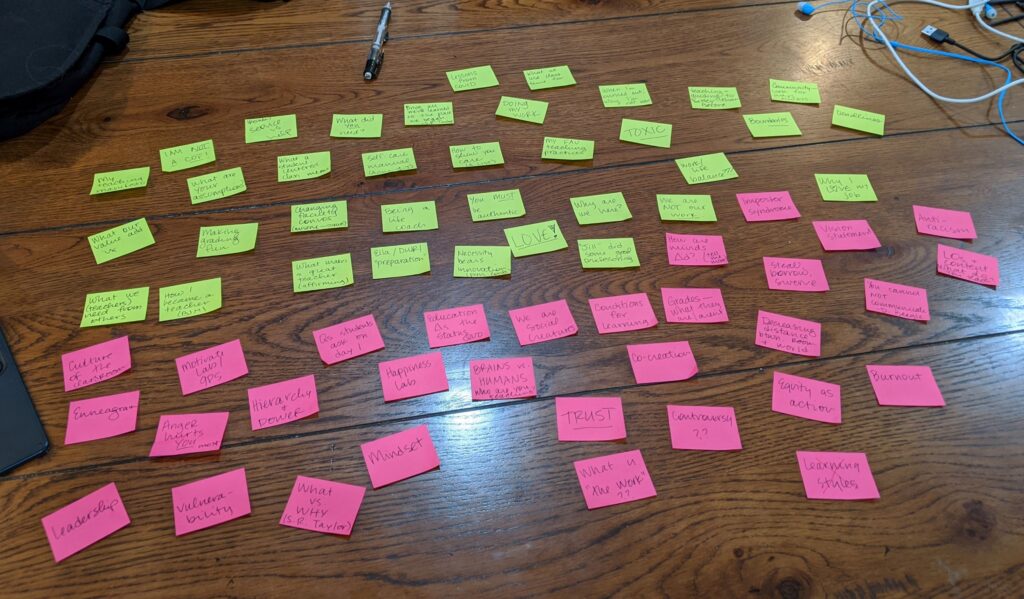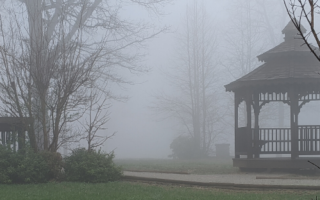Yesterday, I wrote about how I came to be an invited speaker (!!) at this year’s Teaching Professor Conference, which kicks off in just a couple of weeks. Today, I’m going to talk about the actual content of these TPC talks — how my thinking about teaching has been evolving over these last couple of years.
As I wrote yesterday, I vividly recall sitting in a session at the 2019 TPC, one with one of the brightest stars of this conference (by reputation), and getting progressively more frustrated as this speaker said things like, “We have to be firm with these kids,” or “They’ve got to learn about the importance of meeting deadlines.”
My frustration sprang from this deeply protective instinct I have about students. While I’m just as susceptible as the next person to water-cooler grousing about students, I like to think that my complaints are often rather innocuous, of the “I’ve already explained this three times” variety, you know, RTFM. In general, I come to see my students as the baby birds I’ll eventually have to kick out of the nest so they will fly … but in the meantime, I just want to nurture them to the hilt. (Not coddle, mind you — nurture. There IS a difference.)
So at peak lack of subtlety, I titled my 2020 talk, “Stop Blaming Students!” It was, in fact, what I wrote in my conference notes over and over in 2019, and it became something of a mantra for the next year or two.
TL;DR – Teach students, not content. (That’s the subtitle of the talk.)
When we have “covering” course content as our goal dehumanizes our students and their very real struggles; we should instead direct our teaching energy toward meeting our students where they are and helping them grow / learn.
When I get going on this topic, wooo boy! I get going. My husband says I can be a bit, um, self-righteous when I get on this rant.*
* Is self-righteousness a character flaw if you actually ARE right? Asking for a friend. Named Liz.
The a-ha moment
With my presentation behind me and my pages and pages of hastily composed teaching ideology in my Google drive, it was time to figure out what this mess of ideas would all become. That’s when I leveled up and joined Jen Louden‘s nonfiction mastermind group in the fall of 2020.
(The first fully-virtual pandemic semester was, it turns out, the perfect time for this. I was going to spend my time doing something, and it was either going to be getting frustrated with higher ed’s snail’s pace of innovation during a time when so many students were struggling … OR … it was going to be trying to create order out of the chaos of my rants. I chose the latter.)
The mastermind included biweekly coaching calls — to talk about struggles and hiccups around our writing — and weekly “accountability” writing sessions, where the 25 or so of us in the group would hop onto Zoom on a Monday morning and have friendly faces writing alongside us. We also had the option of swapping 4-6 pages weekly with one of our peers (it rotated weekly). Those weekly swaps are the reason I wrote so much over the fall semester; I mentally committed myself to sending brand-new pages weekly, and five pages a week adds up over the course of a few months!
But first, I had to figure out what, exactly, I was writing. I took the document of free-form thoughts from my writing retreat and a stack of Post-Its. For each discrete idea, I made a sticky note and spread them out on my kitchen table. Then, I looked for patterns and groupings.
It started looking like this:

And it ended, magically, with an outline I absolutely loved.
Forging ahead
The topic of my 2021 talk — Transforming Classroom Culture — is all about the material from my hopefully-soon-to-be-forthcoming book. The key argument is that we cannot truly transform classroom culture unless we can first step into our classrooms as aware, fully present people. The talk (and the book) go on to give faculty members tangible tools and practices to cultivate greater presence.
In many ways, it’s the book that only someone with my kind of background and experiences could write; the book integrates my yoga and coaching training and experience with my two decades of teaching experiences. As I’ve done the inner work to find a more comfortable and authentic way of being in my life, I began to notice my enjoyment of my teaching (and my connections with students) ticked up with each new semester. It took a while to connect the dots, but now that I see it, I cannot unsee it.
So… that’s kind of where I am. Getting ready for my Teaching Professor presentation in early June, refining my book proposal draft to send to a publisher, and looking ahead to how I can continue to advocate for this work.
I’d love to hear your thoughts! I’m very much in soliciting-advice mode, and I’ll need a few beta readers for my proposal draft before sending it off with a wish and a smile. Get in touch if you’re game.





